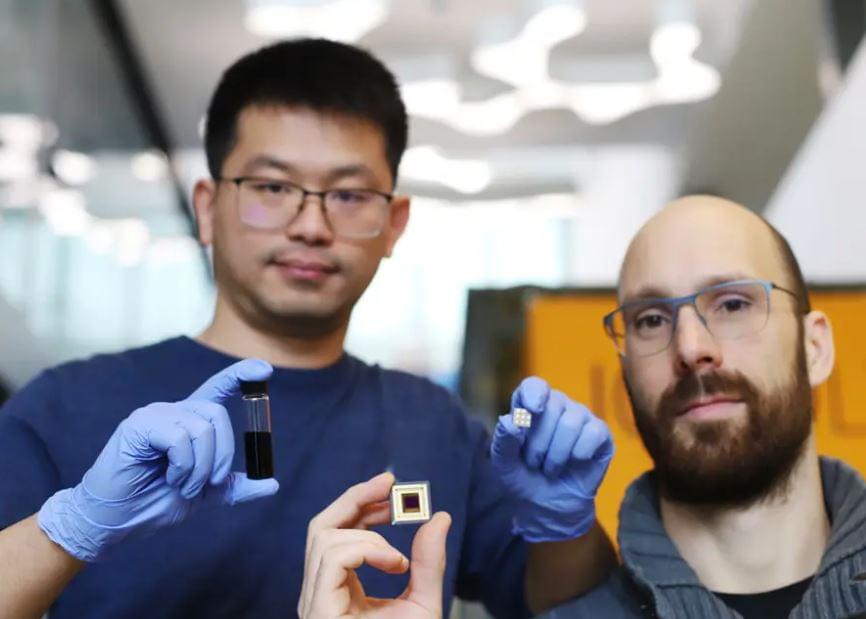ICFO and Qurv researchers have fabricated a new high-performance shortwave infrared (SWIR) image sensor based on non-toxic colloidal quantum dots. In their study published in Nature Photonics, they report on a new method for synthesizing functional high-quality non-toxic colloidal quantum dots integrable with complementary metal-oxide-semiconductor (CMOS) technology.
Invisible to our eyes, shortwave infrared (SWIR) light can enable unprecedented reliability, function and performance in high-volume, computer vision first applications in service robotics, automotive and consumer electronics markets. Image sensors with SWIR sensitivity can operate reliably under adverse conditions such as bright sunlight, fog, haze and smoke. Furthermore, the SWIR range provides eye-safe illumination sources and opens up the possibility of detecting material properties through molecular imaging.
Colloidal quantum dots (CQD) based image sensor technology offers a promising technology platform to enable high-volume compatible image sensors in the SWIR. CQDs, nanometric semiconductor crystals, are a solution-processed material platform that can be integrated with CMOS and enables accessing the SWIR range. However, a fundamental roadblock exists in translating SWIR-sensitive quantum dots into key enabling technology for mass-market applications, as they often contain heavy metals like lead or mercury (IV-VI Pb, Hg-chalcogenide semiconductors). These materials are subject to regulations by the Restriction of Hazardous Substances (RoHS), a European directive that regulates their use in commercial consumer electronic applications.









Comments are closed.